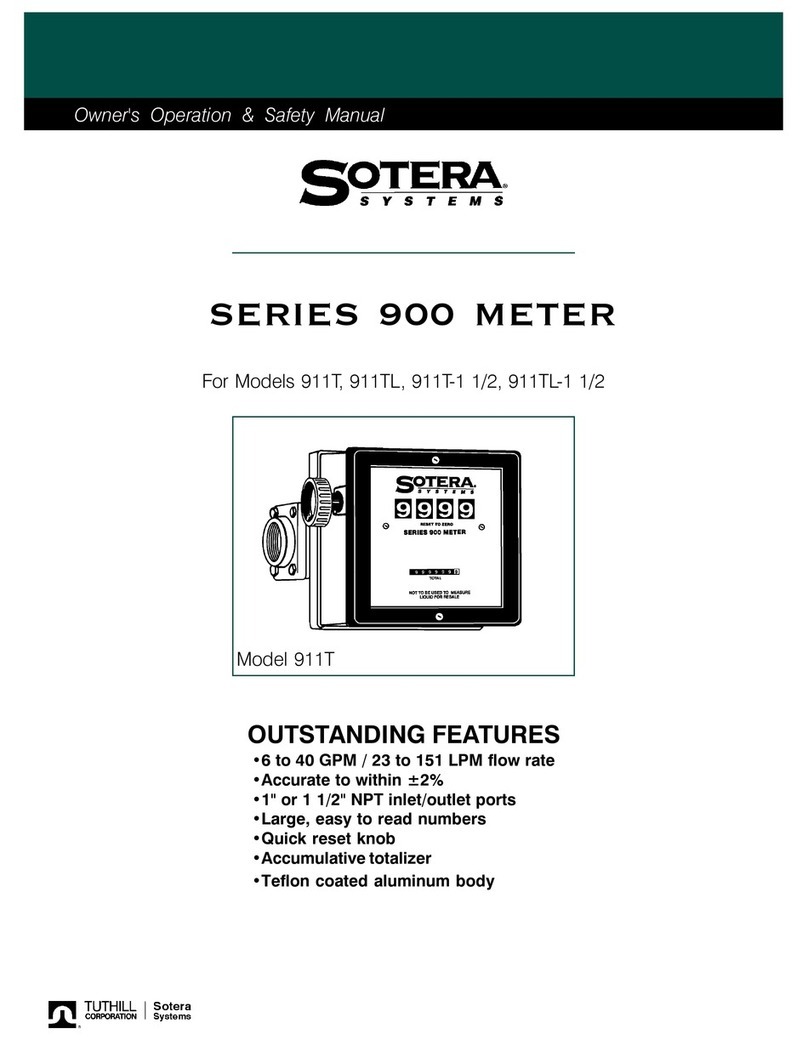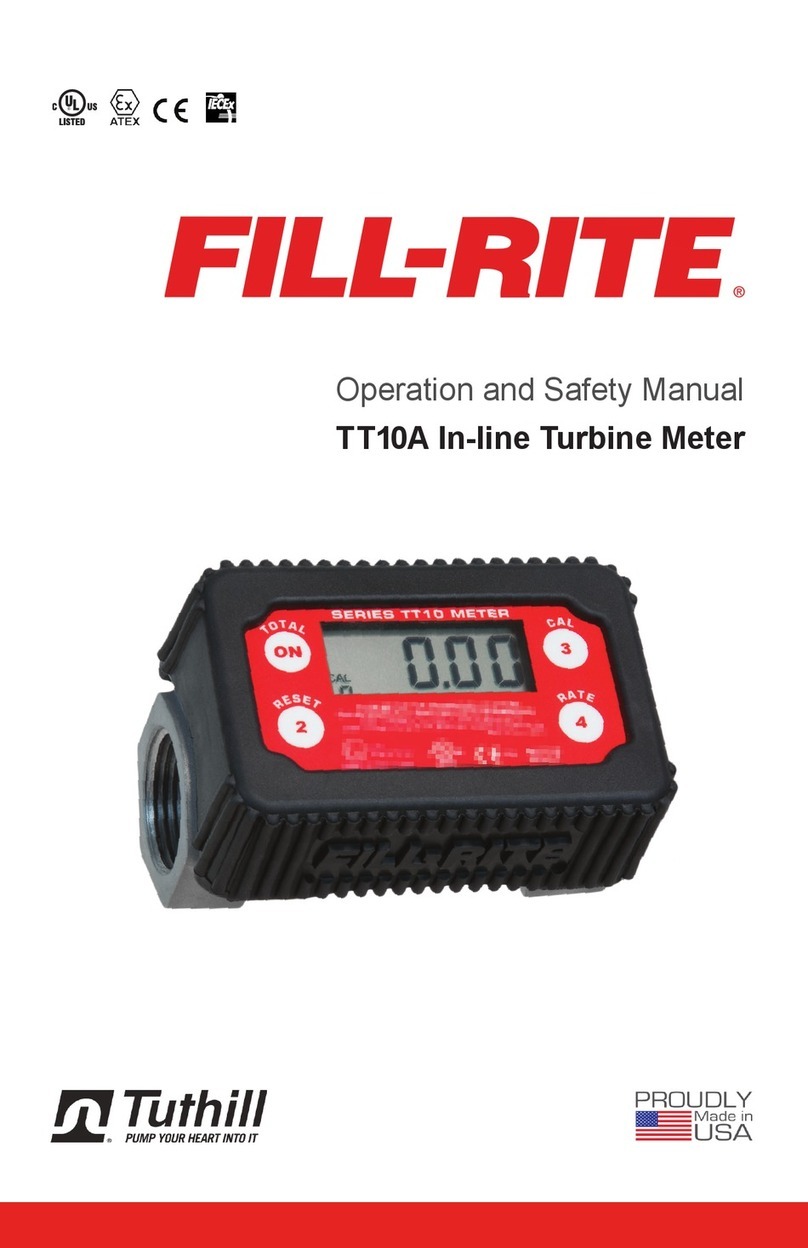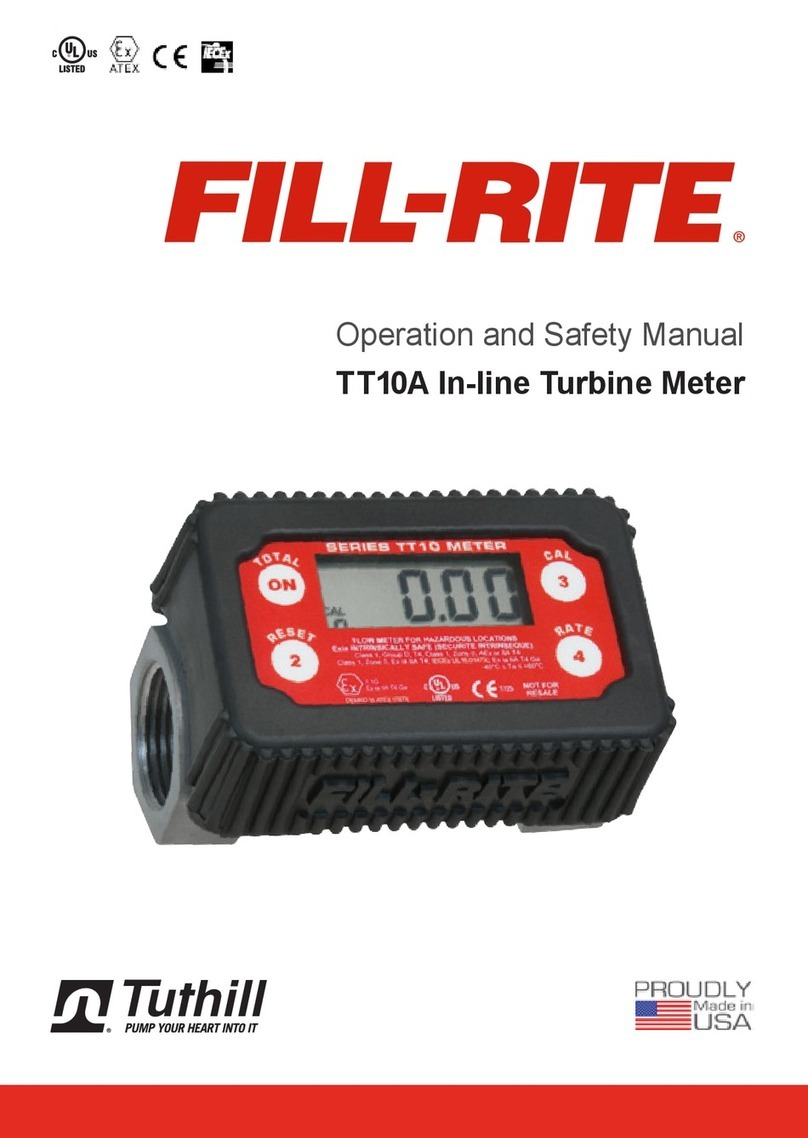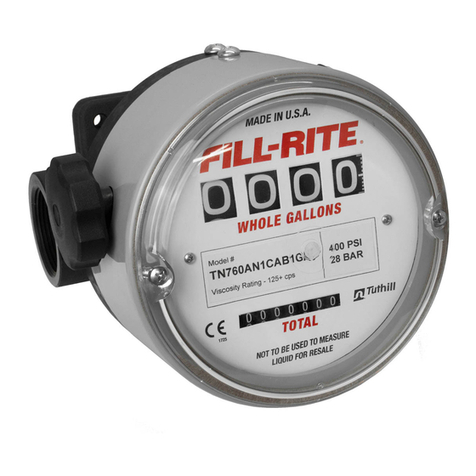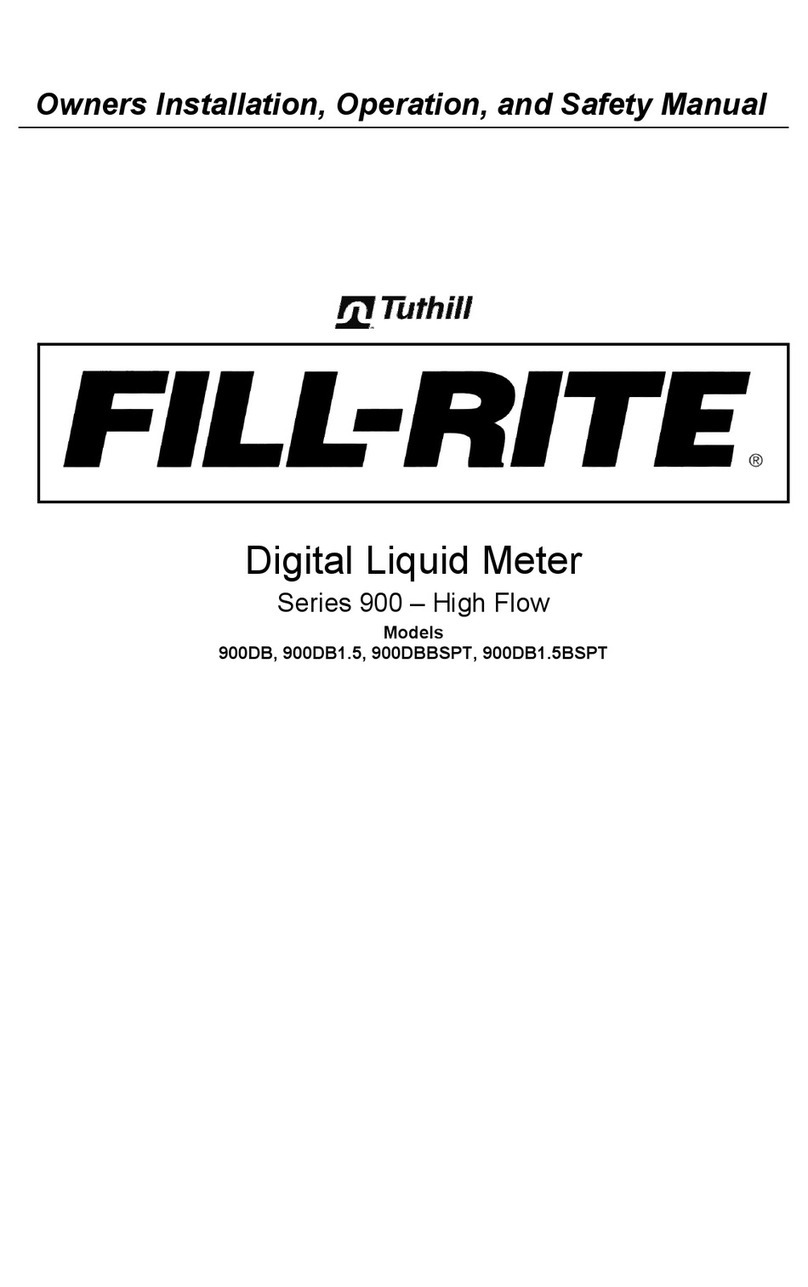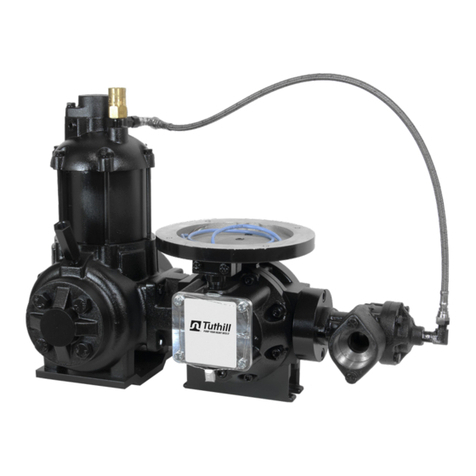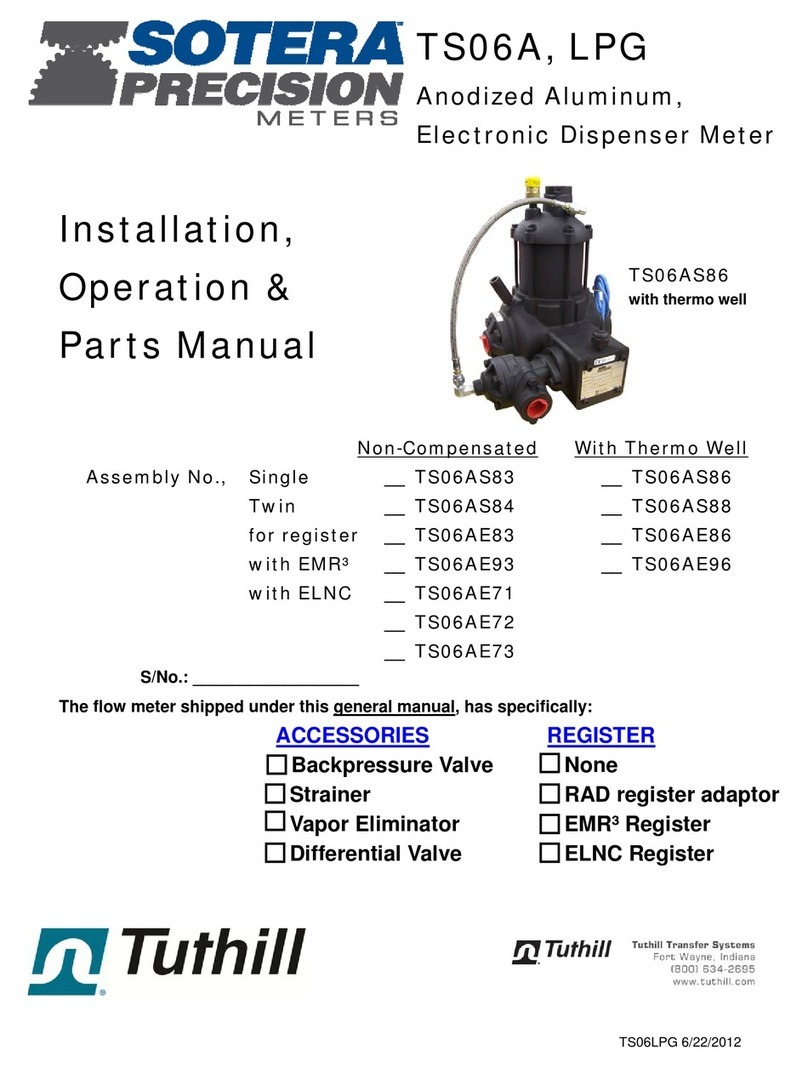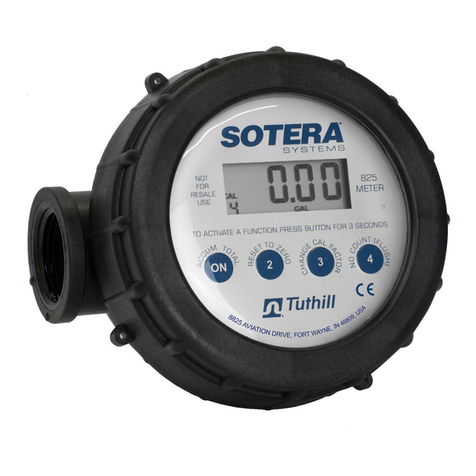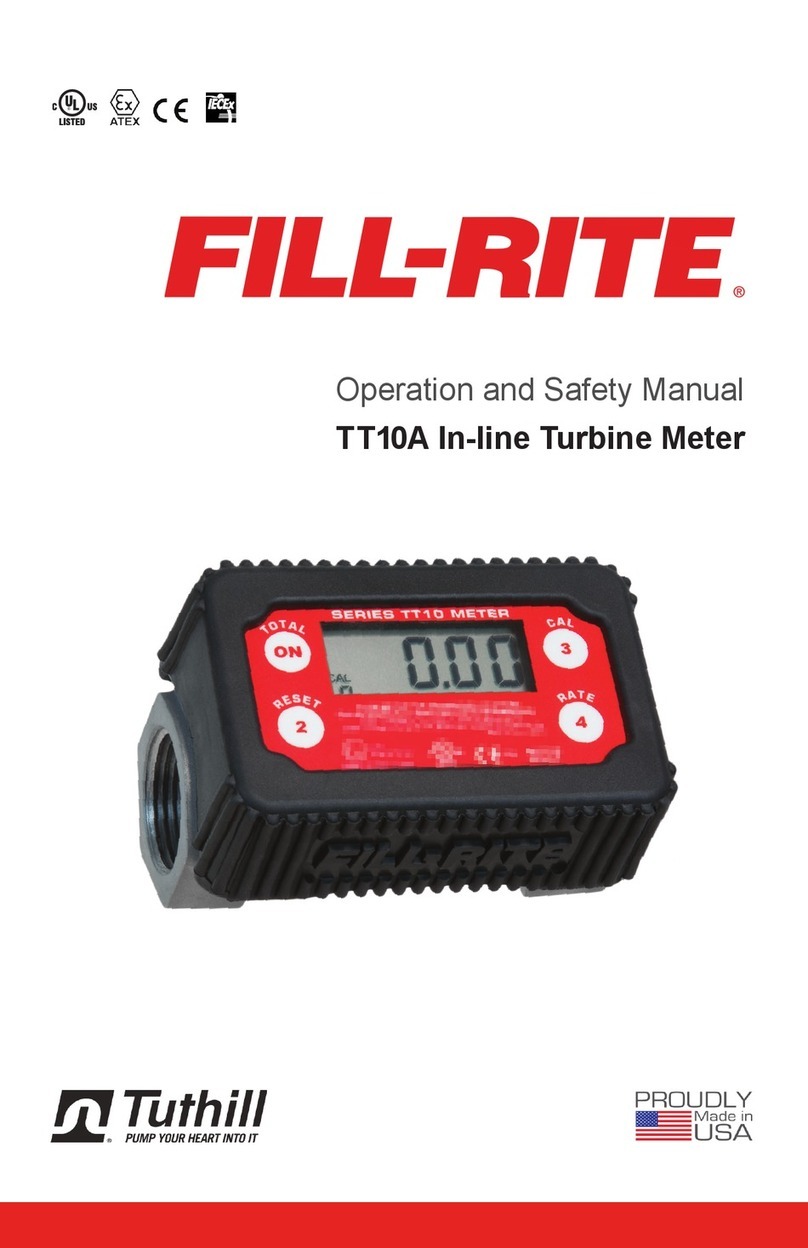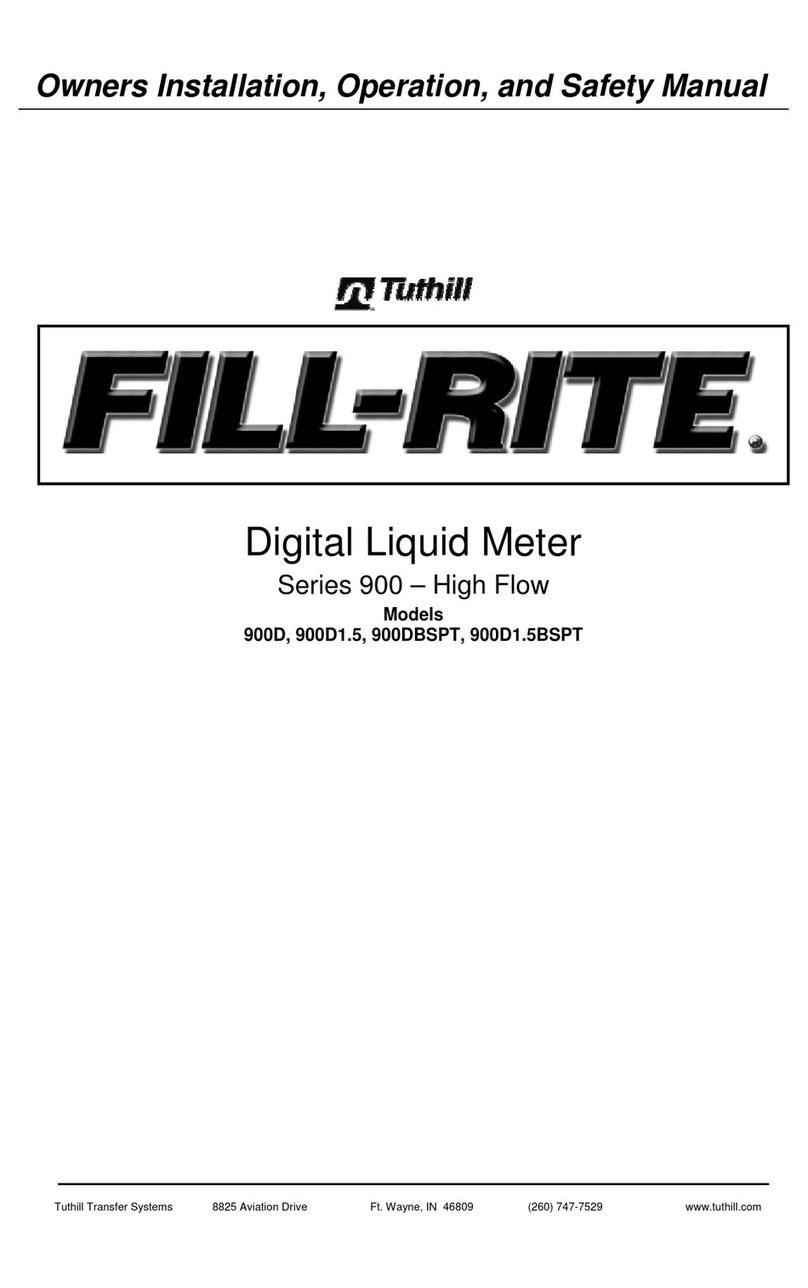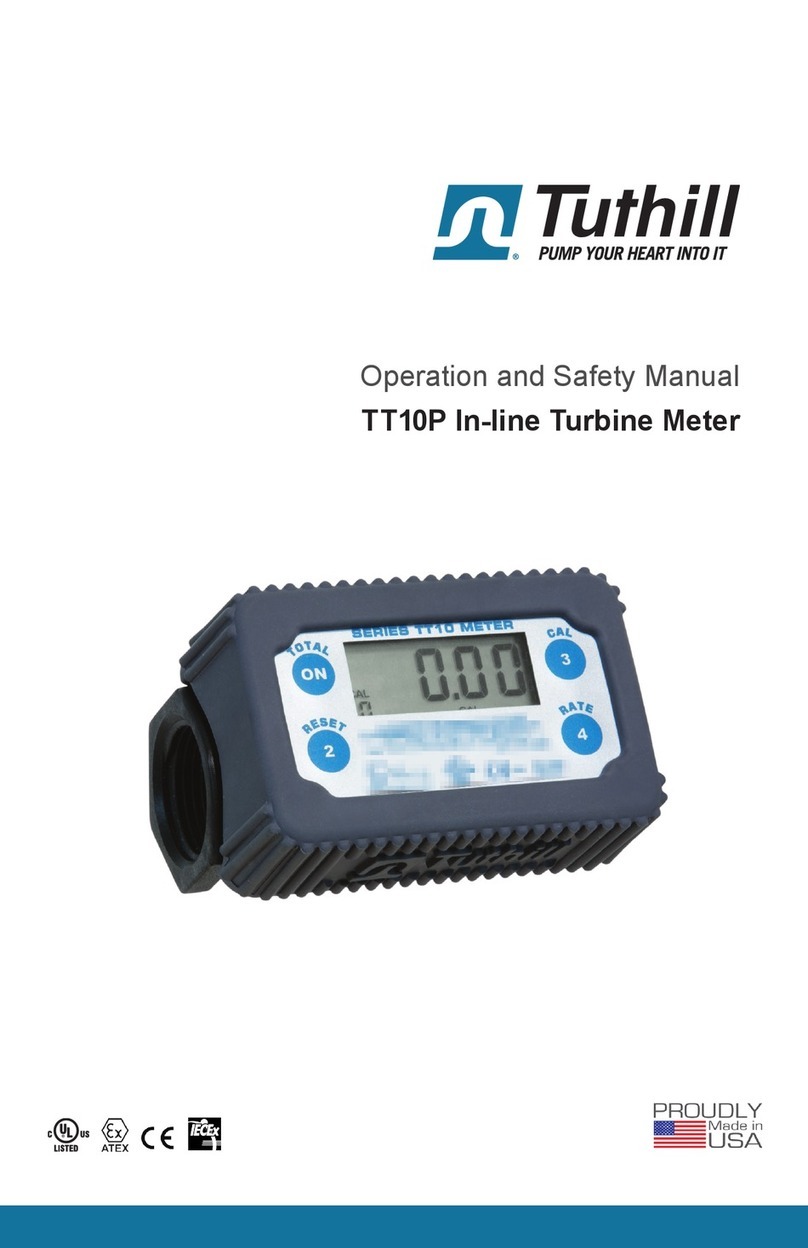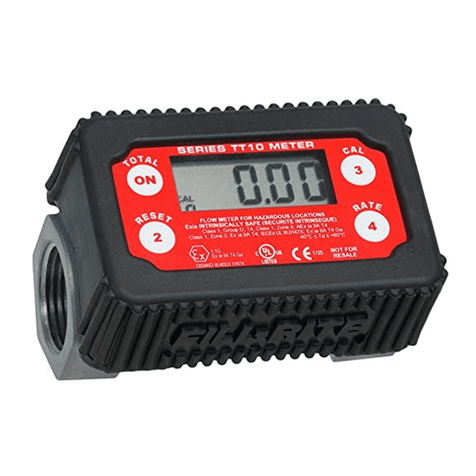
Electrical Installation Information
Internal Power (Battery Power)
All 900DB Series Digital Meters are battery powered. The meter is equipped with a battery
tray located behind the faceplate on the circuit board itself. Power on these units is
supplied by two alkaline “AA” batteries. With normal use, these batteries should provide 2
–4 years of use. The digital display contains an integral warning of low battery level (see
page 6 for details). If there are questions regarding appropriate replacement batteries for
your meter, please contact your Fill-Rite Customer Service Technical Support
Representative at 1-800-634-2695 (M-F 8 AM–5 PM ET). Incorrect battery selection may
void UL certification.
Tuthill Product Warranty
Tuthill Transfer Systems (“Manufacturer”) warrants each consumer buyer of its Fill-Rite
products (“Buyer”) from the date of invoice or sales receipt, that goods of its manufacture
(“Goods”) shall be free from defects of materials and workmanship. Duration of the
warranty is as follows:
Heavy Duty Products –Two Years
Manufacturers sole obligation under the foregoing warranties will be limited to either –at
Manufacturers option –repairing or replacing defective goods (subject to limitations
hereinafter provided) or refunding the purchase price for such Goods theretofore paid by
the buyer, and Buyers exclusive remedy for breach of any such warranties will be
enforcement of such obligations of the Manufacturer. If the Manufacturer so requests the
return of such Goods, the Goods will be redelivered to the manufacturer in accordance with
Manufacturers instructions FOB Factory. The remedies contained herein shall constitute
the sole recourse of the Buyer against the Manufacturer for breach of warranty. IN NO
EVENT SHALL THE MANUFACTURER’S LIABILITY FOR ANY CLAIM FOR DAMAGES
ARISING OUT OF THE MANUFACTURE, SALE, DELIVERY, OR USE OF THE GOODS
EXCEED THE PURCHASE PRICE. The foregoing warranties will not extend to goods
subject to misuse, neglect, accident, improper installation or maintenance, or have been
repaired by anyone other than the Manufacturer or its authorized representative. THE
FOREGOING WARRANTIES ARE EXCLUSIVE AND IN LIEU OF ALL OTHER
WARRANTIES OF MERCHANTABILITY, FITNESS FOR PURPOSE OF ANY OTHER
TYPE, WHETHER EXPRESSED OR IMPLIED. No person may vary the forgoing
warranties or remedies, except in writing signed by a duly authorized officer of the
Manufacturer. The Buyer’s acceptance of delivery of the Goods constitutes acceptance of
the foregoing warranties and remedies, and all conditions and limitations thereof.
Tuthill Corporation recommends you retain your sales receipt as proof of purchase.
WARNING! To reduce the risk of explosion DO NOT mix old batteries with
new batteries, or mix batteries of different manufacturers.
WARNING! Batteries may ONLY be replaced with the following:
Duracell MN1500
Duracell MX1500
Energizer E91
